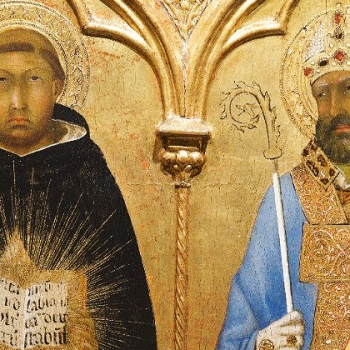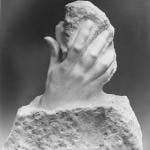
The letter Q has developed a reputation in modern culture. For most people, Q is the guy who provides James Bond with gadgets. For others, Q refers to a character in Star Trek.
Catholic theology, too, has a mysterious character known as Q. In this paper, I will examine what is known as the Q hypothesis. I will begin by exploring its development and the evidence supporting it. Lastly, I will discuss its criticisms. First, however, what or who is Q?
The Development Of The Theory
Why Q? Q is the first letter in the German word quelle, meaning source. Specifically, the Q theory refers to a hypothetical source used for the synoptic gospels (Matthew, Mark, and Luke).
As a point of departure, it is beneficial to point out that the Bible – including the gospels – is the product of an oral tradition. One way of viewing this is to recognize that the Bible took approximately four hundred years to be compiled. When we consider that the printing press was not invented until 1440, we start to see the necessity of an oral tradition for maintaining and transmitting knowledge.
Succinctly put, oral tradition refers to a dynamic and highly diverse medium for evolving, storing, and transmitting knowledge, art, and ideas. It is typically contrasted with literacy, with which it can and does interact in myriad ways, and also with literature, which it dwarfs in size, diversity, and social function.
Many of these oral stories made their way onto paper, and some of these made their way into the biblical canon, while many more provided the source from which the biblical authors drew. One such document is the Q source.
Evidence Of Q
It should be noted that the Q source is not extant or lost in the traditional sense. That is to say, it was not known with certainty to have existed. This leads to the obvious question: what evidence is there to support the Q hypothesis?
First, there is much to suggest, and, indeed, it is widely accepted that the gospels of Matthew and Luke borrowed material from the gospel of Mark when developing the chronology of Jesus’ life. Additionally, it seems that Matthew and Luke used a second source for some material that is common in both of them. This source is what is referred to as the Q source.
Therefore, Mark and Q seem to be Matthew and Luke’s primary sources of information. Both Matthew and Luke contain material peculiar to each of their Gospels. Examples include the infancy narratives and post-resurrection appearances. Additionally, material is probably drawn from other sources, which may be designated M (material found only in Matthew’s special source) and L (material found only in Luke’s special source).
The second piece of evidence supporting the existence of the Q source is what is known as the “Gospel of Thomas.” Before proceeding, it is essential to point out that the Gospel of Thomas is not accepted as divinely inspired by the Catholic Church and, therefore, is not part of the biblical canon.
That said, the Gospel of Thomas is unique in that it provides no narration or historical data. Rather, it is entirely composed of sayings attributed to Christ. Of significance is that these various sayings appear throughout the synoptic gospels.
Accepting the existence of the Q source (and many theologians do not), who or what was it?
Who Was Q?
Perhaps not who, but what. That is, it is more likely that the Q source was a document of some sort and not an actual person.
The reason why this is likely is the fact that despite writing independently of each other, Matthew and Luke share some two hundred and thirty-five verses. Furthermore, the material has a narrative structure that proceeds from one event to another. If Matthew and Luke wrote independently of each other, the material would have to be accessible to both, and that is unlikely if they used an oral source.
This inference is buttressed by Luke’s language when he writes that “many have undertaken to compile a narrative” of what Jesus did. It is highly likely that he used one or more such documents.
Criticisms Of The Q Hypothesis
As mentioned above, the Q source hypothesis is not without its detractors.
Despite the depth and breadth of Catholic theology, the Q source was unheard of until the 19th century. Only recently did a supposition arise that Matthew and Luke might have taken their common material from a single written source.
Unlike most ancient documents that have been lost, the Q source does not have independent references. The Church fathers make no explicit reference to a Q source, and neither do the Gospel authors.
Additionally, if such a document existed, it does not appear to belong to a known Jewish or Christian writing genre of the time.
Conclusion
Questions have arisen recently about the authorship of the synoptic Gospels. If the authorship is in dispute, it is natural to question and examine the sources used in writing the Gospels.
However, the Gospels “came to be known by these names within living memory of the time they were written, when people were aware of who the authors were, and therefore we need to take the authors’ names seriously.” (Akin, Jimmy. The Bible Is a Catholic Book. Catholic Answers Press, 2019).
Still, the question of what authorities the Gospel authors utilized is of interest in theological circles. In the preceding essay, I examined one possible source of information: the Q source.

















